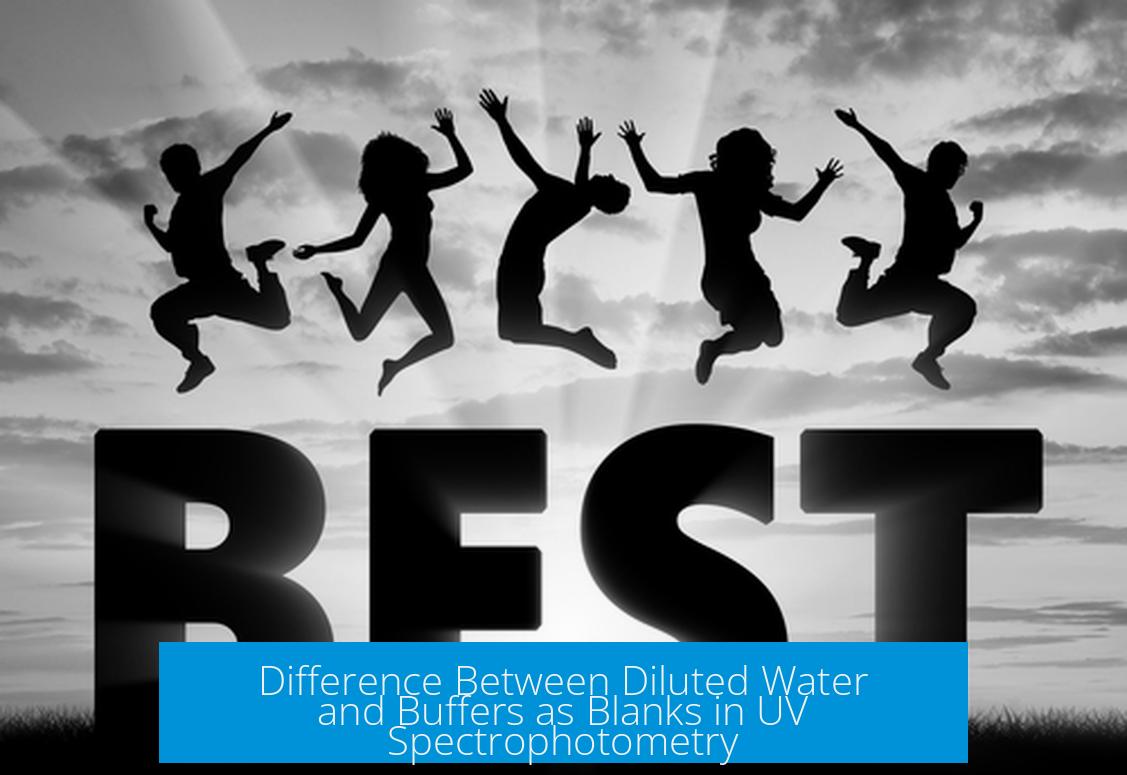Difference Between Using Diluted Water and Buffers as Blank in UV Spectrophotometry

In UV spectrophotometry, the choice between diluted water and buffers as a blank depends on the solvent environment of the sample. The blank must contain everything except the analyte to accurately correct for background absorbance.
Role of the Blank
The blank serves as a reference to remove absorbance contributions from the solvent and other solution components.
It contains all ingredients present in the sample except the substance being measured.
Using Diluted Water as Blank
Diluted water is used as the blank when the sample is dissolved in pure water or a solvent very close to water.
- No additional UV-absorbing substances are present in this solvent.
- Water alone has minimal UV absorbance above 200 nm, making it a simple blank choice.
Using Buffers as Blank
Buffers should be used as blank when the sample solution contains buffering agents.
- Buffers may absorb UV light at certain wavelengths.
- Using the same buffer as blank accounts for this background absorbance.
- This prevents overestimation or distortion of the analyte’s absorbance.
Summary Table
| Blank Type | When to Use | Reason |
|---|---|---|
| Diluted Water | Sample solvent is pure or near-pure water | Minimal UV absorbance, simple baseline |
| Buffer Solution | Sample contains buffer components | Correct for buffer background absorbance |
Key Takeaways
- Blank must match the solvent environment of the sample.
- Diluted water blank suits samples in water alone.
- Buffer blank suits samples in buffered solutions.
- Proper blank selection prevents measurement errors due to background absorbance.
Why do we sometimes use diluted water as a blank in UV spectrophotometry?
Diluted water is used as a blank when the sample solvent is just water or very close to it. This ensures the blank matches the solvent environment without any other components.
When should buffers be used as blanks instead of water?
Buffers are used as blanks when the sample is dissolved in a buffered solution. This accounts for any absorbance caused by the buffer itself.
What happens if the blank does not match the solvent composition of the sample?
If the blank differs from the sample solvent, the absorbance readings may be inaccurate. The background absorbance from the solvent or buffer won’t be properly accounted for.
Can using water as a blank for a buffered sample affect the results?
Yes. Using water as a blank for a buffered sample ignores the buffer’s absorbance. This may lead to errors in measuring the analyte’s absorbance.
Is the blank solution required to contain any part of the analyte?
No. The blank must contain everything except the analyte. This helps isolate the absorbance of the analyte when measurements are taken.





Leave a Comment